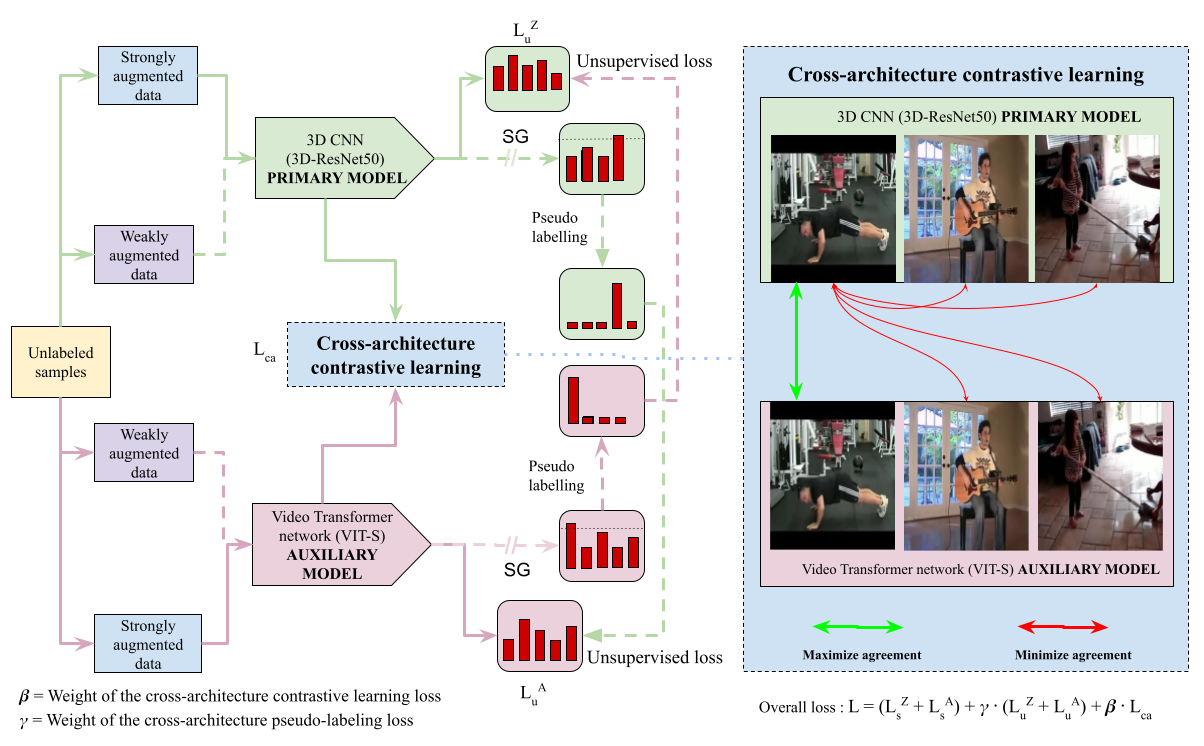ActNetFormer: Transformer-ResNet Hybrid Method for Semi-Supervised Action Recognition in Videos
Human action or activity recognition in videos is a fundamental task in computer vision with applications in surveillance and monitoring, self-driving cars, sports analytics, human-robot interaction and many more. Traditional supervised methods require large annotated datasets for training, which are expensive and time-consuming to acquire. This work proposes a novel approach using Cross-Architecture Pseudo-Labeling with contrastive learning for semi-supervised action recognition. Our framework leverages both labeled and unlabelled data to robustly learn action representations in videos, combining pseudo-labeling with contrastive learning for effective learning from both types of samples. We introduce a novel cross-architecture approach where 3D Convolutional Neural Networks (3D CNNs) and video transformers (VIT) are utilised to capture different aspects of action representations; hence we call it ActNetFormer. The 3D CNNs excel at capturing spatial features and local dependencies in the temporal domain, while VIT excels at capturing long-range dependencies across frames. By integrating these complementary architectures within the ActNetFormer framework, our approach can effectively capture both local and global contextual information of an action. This comprehensive representation learning enables the model to achieve better performance in semi-supervised action recognition tasks by leveraging the strengths of each of these architectures. Experimental results on standard action recognition datasets demonstrate that our approach performs better than the existing methods, achieving state-of-the-art performance with only a fraction of labeled data. The official website of this work is available at: https://github.com/rana2149/ActNetFormer.
PDF Abstract





